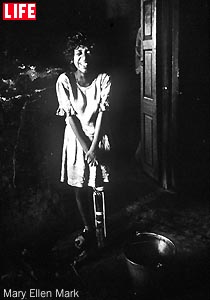
"At the dinner, blind girl gets a second helping; there is no more rice, so they give her bones. She doesn't know what they are, so she cries and throws them on the floor. Some of the women have an automatic begging gesture. They are old, senile; so many years they have raised their hands to beg, they cannot stop. At 6:30 the nuns go home, and the patients settle down for the night."
In the schedule that defines their life, the nuns eat dinner, have a bit of free time before night prayers, then retire at 10. They rise at 4:30 every morning to pray, do housework, wash out one of their two saris, attend mass and eat a breakfast of bread and tea -- and begin work again.
Although this grueling regimen is seen as the fulfillment of their vow to serve and bind themselves to the poor, it is not an end in itself. "Our work is only the expression of the love we have for God," explains Mother Teresa. "To us what matters is an individual. Every person is Christ for me. And since there is only one Jesus, that person is the one person in the world at that moment."
An exuberant 16-year-old who lost a leg to leprosy is an outcast because of the disease, but she lives and is cared for in one of the leprosy hospitals.